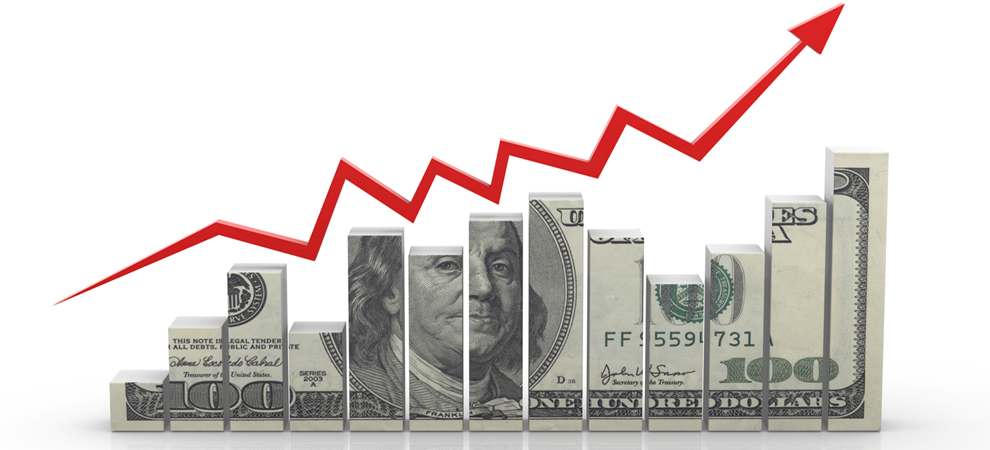31/10/2019
¿Qué hace la diferencia entre bienes raíces internacionales y bienes raíces en América del Norte? Aquí están las cuatro razones. 1. Nueva York domina el ranking de las ciudades más atractivas. Nueva York fortalece su posición en la propiedad de inversión líder en el mundo, con un crecimiento anual de + 20% interanual, ubicándose en el número 1 en el índice de inversión "Ganar en ciudades en crecimiento" de Cushman & Wakefiel...
Ver más...
15/10/2019
El mercado inmobiliario internacional de lujo está en auge. Los inversores de alto patrimonio están interesados en invertir en inversiones seguras. Londres, Nueva York, Hong Kong y Miami tienen los favores de los más ricos del planeta, a diferencia de París, un poco más abajo. La primavera pasada, la mayoría de los profesionales en el área de París, pero el precio de un mercado inmobiliario, a pesar de una pausa en el verano, continuaría viendo su precio por metro cuadrado al meno...
Ver más...
13/09/2019
París se está convirtiendo rápidamente en la gran capital europea de bienes inmuebles de lujo. De hecho, París es el coto de caza favorito para clientes internacionales. Manuela Barón, directora de la agencia Emile Garcin Real Estate - Paris Rive Gauche, testifica: "los apartamentos con más de 3 millones de euros han saltado con los clientes ingleses, estadounidenses y asiáticos". Cita el ejemplo, en una mansión del siglo XVIII, de en un apartamento de 250 metros cuadrados, cerca de los Jardines de Luxemburgo, que se vendió por 6,...
Ver más...
07/09/2019
Las ciudades siempre son más competitivas y luchan por encontrar su lugar en las megaciudades de rango mundial. Las oficinas se trasladan con ellos, buscando la ubicación ideal y los perfiles más adecuados. JLL ha investigado e identificado 10 tendencias mundiales.
Empresa visionaria.
A las compañías visionarias les está yendo bien al registrar tasas de rendimiento récord y al estar armadas para el mañana.
...
Ver más...
05/09/2019
Según la última investigación de CBRE, la inversión de arrendamiento neto de EE. UU. Está superando el mercado inmobiliario comercial más amplio en 2019, con una demanda creciente de inversores tanto nacionales como extranjeros para activos industriales y de oficinas. La inversión neta de arrendamiento, incluidas las oficinas, propiedades industriales y minoristas, subió un 17,2% interanual en el primer semestre de 2019 a $ 33,4 mil millones, con un crecimiento del volumen total de ventas del 13,4% durante el mismo período. ...
Ver más...
29/08/2019
Según un informe de ATTOM Data Solutions, que analizó áreas de oportunidad calificadas establecidas por el Congreso de los Estados Unidos en la Ley de Reducción de Impuestos y Empleos de 2017, se encontró que aproximadamente el 80 por ciento de esas áreas estaban por debajo del promedio. La cifra nacional de $ 266,000 y esa mitad tenía menos de $ 150,000. El informe comparó además las Áreas de oportunidad que se encuentran en las regiones donde son menos del 50 por ciento del valor típico en las Áreas estadísticas metropolitana...
Ver más...
27/08/2019
Según los últimos resultados de la Encuesta del Mercado Multifamiliar de la Asociación Nacional de Constructores de Viviendas, la confianza de los constructores estadounidenses para nuevas viviendas multifamiliares mejoró en el segundo trimestre de 2019. El Índice de Producción Multifamiliar (MPI) aumentó 16 puntos a 56 en comparación con el trimestre anterior. Mientras tanto, y el Índice de vacantes multifamiliares (MVI) cayó ocho puntos a 40, con números más bajos. El IPM es un promedio ponderado de tres componen...
Ver más...
22/08/2019
Noticias Residenciales »Edición Detroit | Por Monsef Rachid | 22 de agosto de 2019. Según un informe de Redfin, una familia típica en el área de San Francisco necesitaría triplicar sus ingresos anuales para comprar cómodamente una casa de precio medio. En marcado contraste, la familia típica de Detroit gana más dinero por una vivienda de precio medio. En San Francisco, el hogar más barato, el ingreso familiar promedio de $ 92,714 cae en los $ 265,000 por año necesarios para paga...
Ver más...
16/08/2019
Noticias Residenciales Edición Santa Bárbara | Por Michael Gerrity | 15 de agosto de 2019.
El precio promedio de una vivienda en California alcanza los $ 608,660 en el segundo trimestre
Según la Asociación de Agentes de Bienes Raíces de California, los precios más altos y la capacidad de los californianos de comprar una casa se redujeron aún más en el segundo trimestre de 20...
Ver más...
12/08/2019
Noticias Residenciales Edición Miami Beach | Por Michael Gerrity | 12 de agosto de 2019. Según la Asociación de Agentes de Bienes Raíces de Miami, las ventas de viviendas existentes en el Condado de Miami-Dade aumentaron año tras año en 2019. Las ventas totales de Miami aumentaron 0.6%, de 7.717 a 7.861. Las ventas de viviendas unifamiliares aumentaron 1.8%, de 3.784 a 3.854, año tras año en 2019. Las ventas de condominios existentes disminuyeron 0.6% año tras año, disminuyendo de 4.0...
Ver más...
09/08/2019
Noticias Residenciales »Edición Irvine | Por Michael Gerrity | 8 de agosto de 2019. Silicon Valley, San Francisco, Irvine, Honolulu y San Diego son los mercados de viviendas más caros de Estados Unidos en el segundo trimestre. Según la Asociación Nacional de Agentes Inmobiliarios, la mayoría de los suburbios metropolitanos de EE. UU. En el segundo trimestre de 2019. Los precios promedio de viviendas unifamiliares ...
Ver más...
07/08/2019
Noticias Residenciales »Edición Irvine | Por Michael Gerrity | 6 de agosto de 2019. Idaho, Utah y Nevada experimentan los mayores aumentos año tras año Según el último Índice de precios de viviendas de CoreLogic para junio de 2019, los precios son una y otra vez. La vivienda aumentó un 3,4% desde junio de 2018. Tenemos una base mes a mes, aumentó un 0,4% en junio de 2019. Los precios de las viviendas unifamiliares se encuentran en su punto más alto y continúan crecie...
Ver más...
05/08/2019
Noticias Comerciales »Edición de Los Ángeles | Por Michael Gerrity | 5 de agosto de 2019. Según el asesor inmobiliario comercial CBRE, el volumen global de inversión inmobiliaria comercial aumentó desde el primer trimestre de 2019 en todas las regiones, pero en general cayó un 7,5% interanual en el segundo trimestre de 2019, incluidas las transacciones a nivel de entidad. Solo la región de América reportó un crecimiento año tras año (0.7%). La actividad disminuyó respecto al año pasado en un 17% e...
Ver más...
29/07/2019
Noticias Residenciales »Edición Seattle | Por el personal de WPJ | 25 de julio de 2019. Según Redfin, el 99 por ciento de los agentes inmobiliarios de los EE. UU. Están orgullosos de sus servicios, y solo el 20 por ciento recomendaría sus carreras a otros. El ingreso más alto (42%) y la dificultad para encontrar clientes (38%). El sesenta por ciento de los agentes con experiencia dijo que sus ingresos habían aumentado en los últimos cinco años, mientras que el 14 p...
Ver más...
22/07/2019
Noticias Residenciales »Irvine Edition | Por Michael Gerrity | 19 de julio de 2019. Los propietarios de viviendas disfrutan de una ganancia de $ 9.7 billones en capital en los últimos 10 años, frente a los $ 6.1 billones en el primer trimestre de 2009. Según un informe especial de CoreLogic titulado "El papel de la vivienda en la expansión económica más larga", que analiza el impacto del mercado de la vivienda en los EE. U...
Ver más...
18/07/2019
Noticias Residenciales »Phoenix Edition | Por el personal de WPJ | 18 de julio de 2019. Según la última Asociación Nacional de Constructores de Viviendas / Índice de Mercado de Vivienda de Wells Fargo, la confianza de los constructores de EE. UU. En el mercado de viviendas unifamiliares de nueva construcción aumentó un punto a 65 en julio de 2019. Esto marca el sexto mes consecutivo que los niveles de sentimiento han mantenido en un rango constante en la baja a mediados de los años 60. ...
Ver más...
15/07/2019
Noticias comerciales »Edición de la ciudad de Nueva York | Por Michael Gerrity | 15 de julio de 2019. La ciudad de Nueva York, San Francisco, Boston, Dallas, Columbus y Los Ángeles reciben la mayor parte de capital extranjero en 2019. Según CBRE, la búsqueda global de rendimiento y la diversificación de la cartera está llevando al mercado de bienes raíces de arrendamiento neto de los Estados Unidos. La inversión...
Ver más...
08/07/2019
Noticias Residenciales »Edición de Hong Kong | Por Michael Gerrity | 5 de julio de 2019. De acuerdo con el último informe de JLL en el Mercado de Ventas Residenciales de Hong Kong, solo dos lugares más para ser licitados en la pista de Kai Tak podrían disfrutar de las vistas del Puerto Victoria después de que el gobierno otorgó el sitio para el Área 4C de Kai Tak. Los desarrolladores se quedarán en Kai Tak porque hay menos terreno con vista al puerto de Victoria. De acuerdo con la inf...
Ver más...
17/06/2019
Vacation News Miami Beach Edition | Por Michael Gerrity | 17 de junio de 2019.
El crecimiento limitado de la demanda no puede mantenerse al ritmo de los modestos aumentos de la oferta
Según el último informe de CBRE Hotels Research, la tasa anual aumentará hasta 2022.
Mientras tanto, se proyecta que la tasa de crecimiento anual promediará aproximadamente tres cuartos de su promedio de la...
Ver más...
11/06/2019
Noticias residenciales »Edición de la ciudad de Nueva York | Por Michael Gerrity | 11 de junio de 2019. Primera caída anual de precios de nueva construcción en 7 años Según Redfin, hace 1 año en el primer trimestre de 2019, la primera caída de este tipo en siete años. Las ventas de casas nuevas en los EE. UU. También cayeron un 3,1 por ciento en el primer trimestre de 2019, el tercer trimestre consecutivo de caídas. La ...
Ver más...
16/05/2019
Noticias Residenciales »Irvine Edition | Por Monsef Rachid | 16 de mayo de 2019. Sin embargo, la ejecución de Spike Spike comienza en Washington, Florida, Oregon y Louisiana De acuerdo con el Informe de Mercado de Ejecuciones Hipotecarias de ATTOM Data Solutions de abril de 2019 en EE. UU., Los registros de ejecuciones hipotecarias de EE. UU. (Registros de incumplimiento, subastas y recuperaciones bancar...
Ver más...
08/05/2019
Noticias Residenciales »Irvine Edition | Por Monsef Rachid | 8 de mayo de 2019. Global Listings y Global Real Estate Listings Global Listings, Inc., a través de su plataforma en línea de MLS GlobalListings.com, acaba de anunciar esta semana el lanzamiento de su nuevo servicio de listados CORPORATIVO PRIME para empresas inmobiliarias de todo el mundo. CORPORATE PRIME es un nuevo servicio de membresía de negocios para pequeñas y medianas empresas, corretaje de bienes raíces y sol...
Ver más...
29/04/2019
Noticias de vacaciones »Grandes destinos | Por Steve Winston | 19 de abril de 2019. Largo invierno te tiene abajo? ¿Su anticipación para la primavera se convirtió en sufrimiento con fiebre o alergias de todo lo que florece? ¿Estás listo para un cambio de ritmo, pero también un cambio de lugar? American West está lleno de auténticos ranchos de trabajo donde puedes convertirte en una vaquera por una o dos semanas. Vaqueros y vaqueras, pero también participan en muchas de sus actividades ... como mon...
Ver más...
09/02/2019
Residential News » Los Angeles Edition | By Michael Gerrity | February 7, 2019.
Yet Luxury Home Prices Still Tick Up in Q4, 2018
According to Redfin, the average sale price for U.S. luxury homes nationwide rose 4.7 percent annually to an average of $1,772,000 in the fourth quarter of 2018. That's on ...
Ver más...
21/09/2018
Residential News » Seattle Edition | By WPJ Staff | September 21, 2018.
Share of homes with price drops reached a record-high in September.
According to new Redfin research, signs continue to point toward a changing market that's letting U.S. homebuyers be more selective as supply constraints begin to ease in the hottest m...
Ver más...
07/09/2018
Residential News » Las Vegas Edition | By Monsef Rachid | September 7, 2018.
According to the Greater Las Vegas Association of Realtors, after climbing steadily since 2012, local Las Vegas home prices have been hovering this summer through August 2018, are maintaining the same home prices as they were...
Ver más...
05/06/2018
Commercial News » New York City Edition | June 5, 2018.
Chicago's Oasia Hotel Downtown Named "Best Tall Building Worldwide" for 2018.
This past week the Council on Tall Buildings and Urban Habitat announced the winners of the 16th Annual CTBUH Awards Program, which compe...
Ver más...
10/05/2018
Commercial News » London Edition | By Michael Gerrity | May 9, 2018
$165 Billion Invested Worldwide in Commercial Assets in Q1.
According to a new report JLL, despite trade tensions and elevated stock market volatility, investors are still seeking value in real estate with...
Ver más...
03/05/2018
Residential News » Seattle Edition | By Michael Gerrity | May 2, 2018
U.S. Housing Demand Fell 6.5% From February to March as Fewer Homes Hit the Market
According to Redfin's latest Housing Demand Index, March marked the second consecutive month of declines thi...
Ver más...
18/04/2018
Residential News » Irvine Edition | By Michael Gerrity | April 18, 2018
According to CoreLogic's new Single-Family Rent Index, which analyzes single-family rent price changes nationally and among 20 metropolitan areas, shows a national rent increase of 2.8 percent in January 2018, compar...
Ver más...
09/04/2018
Vacation News » Phuket Edition | By Monsef Rachid | April 9, 2018
Not only is it one of the top retirement havens for Australians, but with more than 250 courses scattered throughout Thailand, it has fast become a golfer's dream. Because of such, the editors at International Living Australia have just pinpointed the...
Ver más...
03/04/2018
Residential News » Dublin Edition | By Michael Gerrity | April 1, 2018
According to the latest Ireland House Price Report released this week by property website Daft.ie, Ireland home prices nationally rose by 2.5% during the first three months of 2018.
The average price nationwide was €247,000, 7.3% higher than a year ago. Compared to their lo...
Ver más...
26/03/2018
Residential News » Seattle Edition | By Michael Gerrity | March 26, 2018
According to the February 2018 Zillow Real Estate Market Report, residential median rent across the nation is accelerating at its fastest pace in 21 months. Over the past year, the median rent in the U.S. rose 2.8 percent to a Zillow Rent Index (ZRI) of $1,445.
The faste...
Ver más...
06/03/2018
World Propery Journal » Panama City Edition | By WPJ Staff | March 6, 2018
Panama-based Red Frog Beach Island Resort & Spa announced this week the resort's newest amenity, La Rosa Beach Club. The new addition features event and meeting spaces, a bar, a restaurant, a stunning waterfall and an infinity-edge pool.
La...
Ver más...
01/03/2018
World Property Journal » Washington D.C. Edition | By Michael Gerrity | February 28, 2018
According to the American Institute of Architects, 2018 started on a strong note for architecture firms, as the Architecture Billings Index (ABI) saw its highest January score since 2007.
...
Ver más...
15/02/2018
World Property Journal Residential | News » Washington D.C. Edition | By Monsef Rachid | February 14, 2018
U.S. Home Prices Up 5.3 Percent in Fourth Quarter of 2017
According to Realtors, an uptick in existing U.S. home sales in the final three months of 2017...
Ver más...
08/02/2018
Source World Property Journal | By Michael Gerrity | February 7, 2018
According to the Greater Las Vegas Association of Realtors, local home prices cooled off slightly in January 2018, but are still up more than 11 percent from one year ago.
According to the Greater Las Vegas Associati...
Ver más...
29/01/2018
According to the Miami Association of Realtors, luxury home sales in Miami posted double-digit gains while existing condominium transactions surged year-over-year in December 2017.
Luxury ($1 million-and-above) existing Miami condo sales jumped 47.6 percent year-over-year, from 42 to 62. Luxury Miami single-family home sales rose 16.7 percent, from 60 to 70. Existing Miami condo sales increased 6.5 percent year-o...
Ver más...
26/01/2018
According to the National Association of Realtors, existing U.S. home sales subsided in most of the country in December, but 2017 as a whole edged up 1.1 percent and ended up being the best year for sales in 11 years.
Total existing-home sales, which are completed transactions that include single-family homes, townhomes, condominiums and co-ops, increased 1.1 percent in 2017 to ...
Ver más...
22/01/2018
According to Freddie Mac's latest Primary Mortgage Market Survey, the average fixed U.S. mortgage rate rose for the second consecutive week in January 2018.
Len Kiefer, Deputy Chief Economist says, "The U.S. weekly average for the 30-year fixed mortgage rate rose above 4 percent for the first time since last summer to 4.04 percent in this week's survey. This is the h...
Ver más...
15/01/2018
According to data from CBRE, vacant office space in the U.S. increased slightly by 10 basis points (bps) during the fourth quarter of 2017 (Q4 2017) to 13 percent. For the year, vacancy inched up 10 bps, marking the first year-over-year increase in vacancy since 2010.
The vacancy rate in suburban markets increased 10 bps, to 14.2 percent and downtown vacancy ticked up 10 bp...
Ver más...
08/01/2018
Brits Not Deterred by Brexit to Buy Properties in France in 2018
According to Tim Swannie, Director of Marseille, France based property brokerage firm Home Hunts, Brits will not be deterred by the weaker pound and Brexit negotiations and will continue to buy properties in France over the course of 2018, thanks to the positive tax reforms and their desire to s...
Ver más...
03/01/2018
Investors continue to buy into Hong Kong's retail recovery
According to JLL's latest Property Market Monitor released this week, net take-up in Hong Kong's overall office market amounted to 68,800 sq. ft in November 2017, with average monthly rent reaching HKD 71.7 per sq. ft -- 0.3% ...
Ver más...
27/12/2017
New Home Sales in U.S. Hit 10-Year High in November
Western U.S. States Lead the way, Enjoying a 31% Sales Spike in 2017
According to the U.S. Department of Housing and Urban Development and the U.S. Census Bureau, sales of newly built, single-family homes in Novembe...
Ver más...
07/12/2017
Rising Rents, Income Stagnation Force Renters to Pay Bigger Share of Income in 2017
According to Zillow, rising U.S. housing rents are eating up an increasingly large share of American incomes, costing the typical renter $2,000 per year.
Currently, the median U.S. rental requires 29.1 percent of the median monthly income. However, in the...
Ver más...
05/12/2017
The Great American Single-Family Home Problem
The affordable-housing crunch is a nationwide problem, especially in California.
California's median home price, at just over $500,000, is more than twice the national level and up about 60 percent from five years ago, according to Zillow.
The Haskell Street project in Berkeley, California, exemplifies how developers are trying to gentrify U.S. neighborhoods.
...
Ver más...
27/11/2017
According to the National Association of Realtors, existing-home sales in the U.S. increased in October 2017 to their strongest pace since earlier this summer, but continual supply shortages led to fewer closings on an annual basis for the second straight month.
Total existing-home sales, which are completed transactions that include single-family homes, townhomes, condominiums...
Ver más...
20/10/2017
Los Angeles, San Francisco, Oakland, Seattle and Phoenix top target markets
According to CBRE, strong fundamentals, growing sophistication of logistics facilities and e-commerce growth has led to a surge in foreign industrial investment in the U.S.
Foreign investors have acquired nearly $61 billion in U.S. industrial real estate since 2010, ...
Ver más...
14/10/2017
Suburbs Continue to Show Strongest Decreases
According to CBRE, vacant office space in the U.S. declined by 10 basis points (bps) during the third quarter of 2017 (Q3 2017) dropping to 12.9 percent. Continuing a recent pattern, suburban office markets continued to set the pace for declines.
The vacancy rate in suburban markets decreased 20...
Ver más...
10/10/2017
According to the Greater Las Vegas Association of Realtors, local home prices continued to rise rapidly, while home sales stabilized in September 2017.
GLVAR reported that the median price of existing single-family homes sold during September through its Multiple Listing Service (MLS) was $265,000, up 13.5 percent from September 2016. The median price of...
Ver más...
27/09/2017
Existing homes sales in the U.S. have retreated in four of the past five months, but a new survey from the National Association of Realtors finds this slowdown is not because of a lack of confidence from consumers about buying and selling a home, or based on their views about the direction of the economy and their finances.
NAR's third quarter ...
Ver más...
21/09/2017
The National Association of Home Builders is reporting this week that U.S. home builder confidence in the market for newly-built single-family homes fell three points to a level of 64 in September 2017 from a downwardly revised August 2017 reading of 67 on the National Association of Home Builders/Wells Fargo Housing Market Index (HMI).
"The recent hurricanes have intensified our me...
Ver más...
06/09/2017
Q & A with Real Estate Technology Veteran Michael Gerrity
Michael Gerrity has been at the forefront of real estate for more than 30 years. First, the Orlando native had a stellar real estate brokerage career, selling and leasing nearly $300 million worth of commercial office transactions during his 17-plus years in the business. In the last 15 years, Gerrity,...
Ver más...
31/08/2017
According to the Miami Association of Realtors, Miami's existing condominium sales increased for the second time in three months and $1-million-and-up luxury transactions surged for all properties in July 2017.
Sales for existing Miami luxury condos, which are competing with a robust new construction market, surged 51.1 percent and luxury single-family home sales jumped 9.6 pe...
Ver más...
23/08/2017
According to CBRE, suburban U.S. office markets that provide an urban-like live-work-play environment are well positioned to capture strong demand from office users.
Among the most common attributes of so-called "urban-suburban" submarkets are the presence of abundant retail, office and housing options, as well as employment opportunities, based on a survey ...
Ver más...
21/08/2017
According to the latest quarterly report by the National Association of Realtors, the headstrong supply and demand imbalances in much of the United States slightly tempered the pace of sales and caused home prices to maintain their robust growth in the second quarter of 2017.
The national median existing single-family home price in the second quarter was $255,600, which is up 6.2 perce...
Ver más...
15/08/2017
According to realtor.com's latest Housing Shortage Study, the U.S. real estate market is currently experiencing the worst inventory deficiency in 20 years, and for two primary reasons - boomers' reluctance to sell and homes fitting current family needs.
The findings are part of an online survey of 1,054 randomly selected homeowner...
Ver más...
13/08/2017
It's turning out that 2017 is becoming a very good year for Spain's property market, as JLL is now forecasting this year will be the eighth consecutive year of foreign buyer property growth.
Overseas buyers invested €888 million ($1.04b USD) on Spanish properties in the first half of 2017, smashing last year's record of €330 million ($353m...
Ver más...
28/07/2017
According to JLL, Asia hotel investors during the first half of 2017 remained focused on gateway cities such as Hong Kong, Singapore, Sydney and Melbourne, as they offer positive tourism and trading fundamentals while the long-term demand and supply is in balance. Investors also continue to seek opportunistic investments in key emerging tourism markets such as Vietnam.
...
Ver más...
24/07/2017
According to the June 2017 Zillow Real Estate Market Report, the typical U.S. home is worth over $200,000 for the first time ever. The national median home value is now $200,400, up about 7 and a half percent since this time last year.
High buyer demand coupled with fewer homes for sale is driving up home values across the country -- there are 11 ...
Ver más...
21/07/2017
New government should revise existing cooling measures
According to JLL's latest white paper - Up, Up and Away: The Rise and Rise of Hong Kong's Residential Market, JLL expects Hong Kong's housing prices to grow 15% in the coming 30 months given strong demand from owner-occupiers and about half of all household...
Ver más...
14/06/2017
The Greater Las Vegas Association of Realtors (GLVAR) reported this week that despite a shrinking housing supply, local home prices and sales continued to rise in May 2017.
GLVAR reported that the median price of existing single-family homes sold during May through its Multiple Listing Service (MLS) increased to $250,000. That was up 0.4 percent from April and up 9.1 percent from ...
Ver más...
12/06/2017
According to the Mortgage Bankers Association's latest Commercial/Multifamily Delinquency Report, delinquency rates for commercial and multifamily mortgage loans in the U.S. were flat or decreased in the first quarter of 2017.
"Delinquency rates for commercial and multifamily mortgages remained at or near record lows for most capital sources during the first quarter," ...
Ver más...
11/06/2017
According to CoreLogic's Q1 2017 home equity analysis, U.S. homeowners with mortgages (roughly 63 percent of all homeowners) have seen their equity increase by a total of $766.4 billion since Q1 2016, an increase of 11.2 percent. Additionally, the average homeowner gained about $13,400 in equity between Q1 2016 and Q1 2017.
In Q1 2017, the total number of mortgaged residen...
Ver más...
07/06/2017
Joint-ventures in land bidding is expected to increase in Hong Kong
According to JLL's latest Hong Kong Residential Sales Market Report, the Hong Kong Monetary Authority's (HKMA) two-way squeeze to control an overheating property market is unlikely to have any material effect on still-upbeat sentiment for residenti...
Ver más...
02/06/2017
Miami still receives dominant share of foreign residential buyers each year
According to the newly released 2017 Q2 Zillow Home Price Expectations Survey, international buyers of residential real estate in the U.S. don't have a significant impact on the overall housing market. They are far more influential a...
Ver más...
30/05/2017
The recent Belt & Road (B&R) Forum for International Cooperation held in Beijing was attended by numerous international leaders and organizations and discussed topics including currency swaps, policy, infrastructure and trade, with the objective of strengthening connectivity between China and related countries.
What does the B&R Initiative mean for the Chine...
Ver más...
29/05/2017
This week the South Korean National Election Commission announced that Democratic Party candidate Moon Jae-in had been elected as the new President.
Moon succeeds former President Park Geun-hye who was removed from office by the country's top court in March over a wide-ranging corruption scandal and subsequently indicted on a range of charges includin...
Ver más...
29/05/2017
According to STR, the hotel industry in Dubai, recorded strong occupancy levels during the first quarter of 2017 despite continued and significant supply growth.
Based on preliminary data, Dubai recorded an occupancy level of 86.3%, which was a 2.7% uplift compared with Q1 2016. Average daily rate (ADR) was down 6.4% over the same time period to an actual level of AED795.00. As a result, re...
Ver más...
26/05/2017
Home Sales Continue to Rise, Yet Condo Sale Continue to Slide in April
According to a new report by the Miami Association of Realtors, Miami single-family home sales, median prices, traditional transactions and dollar volume increased year-over-year in April 2017.
Single-family home sales in Miami expanded 3.7 percent year-over-year in April, from...
Ver más...






































































